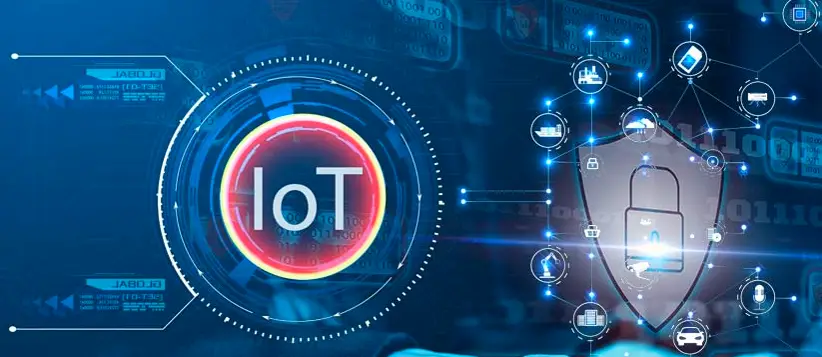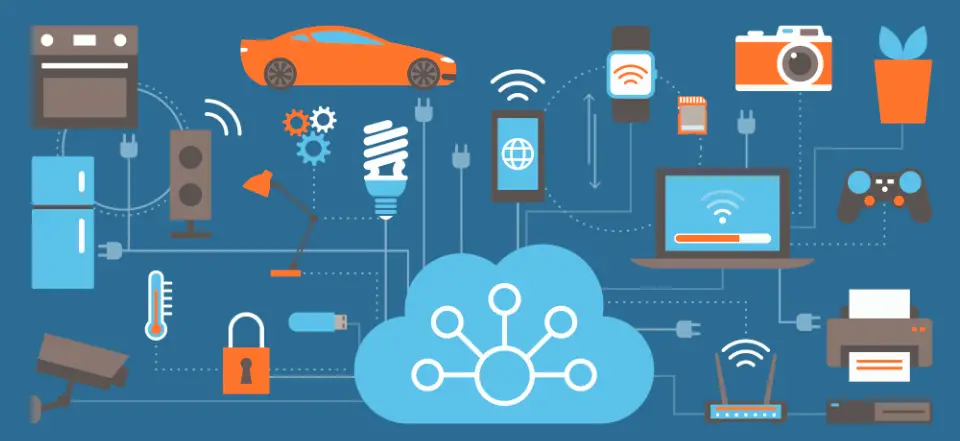The world of technology is ever-evolving, but one of the most exciting developments of the past few years has been the emergence of the Internet of Things (IoT). IoT devices are connected to the internet, allowing them to communicate and exchange data with other devices and systems. This technology has the potential to revolutionize the way we live, work, and play. In this comprehensive guide, we’ll explore the many benefits that IoT devices can bring to your home, office, and lifestyle. From improved energy efficiency to increased security, you’ll learn why investing in an IoT device can be a smart decision. You’ll also discover the different types of IoT solutions available, and what to look for when selecting the right device for your needs. By the end of this guide, you’ll be equipped with the knowledge and resources to make an informed decision about the best IoT device for you.
Benefits of Investing in an IoT Device

The potential benefits of investing in an IoT device are plentiful, and range from increased convenience to enhanced security. By connecting to the internet, IoT devices can provide access to a wealth of data and control over systems and processes. This can greatly improve the efficiency of home and office operations, and also provide peace of mind when it comes to security. Here are some of the key benefits of investing in an IoT device:
Increased Convenience
IoT devices provide increased convenience by allowing users to control their environment from anywhere in the world. This can be especially helpful for busy professionals who need the ability to check on their home or office remotely. For example, an IoT device connected to a security system can alert you when an alarm is triggered, or when the door is opened.
Enhanced Security
By connecting an IoT device to a security system, you can monitor activity in your home or office from anywhere. This can provide increased peace of mind, as you’ll know if anything out of the ordinary is happening. You can also use an IoT device to set up alerts and notifications that will let you know if any suspicious activity is taking place.
Improved Efficiency
IoT devices can also improve the efficiency of home and office operations. For example, you can use an IoT device to automate the operation of lights, heating, and ventilation systems. This can help you save energy and money, as you’ll only be using the systems when necessary. Additionally, IoT devices can be used to monitor and analyze usage data, helping you identify areas for improvement.
Enhanced Experiences
IoT devices can also enhance experiences by connecting to entertainment systems. This can provide access to a wide range of content, from music and movies to games and sports. Additionally, IoT devices can be used to connect to virtual assistants, such as Alexa and Google Home, providing access to a range of useful services.
Different Types of IoT Devices
There are a wide range of different types of IoT devices available, each of which has its own unique features and capabilities. Here are some of the most common types of IoT devices:
Smart Home Devices
Smart home devices are IoT devices that are connected to a home automation system. These devices can be used to control lighting, heating, ventilation, and other systems, as well as provide access to entertainment content. Examples include smart speakers, security systems, and connected thermostats.
Wearable Devices
Wearable devices are small, portable devices that are designed to be worn on the body. They can be used to track data such as heart rate, steps taken, and sleep quality. Additionally, some wearable devices can be used to send notifications, such as text messages or emails. Examples include smartwatches, fitness trackers, and smart glasses.
Industrial Devices
Industrial devices are IoT devices that are designed for use in a factory or industrial setting. They can be used to monitor and control production processes, as well as provide data on the efficiency of these processes. Examples include sensors, controllers, and robotic arms.
Automotive Devices
Automotive devices are IoT devices that are designed for use in vehicles. They can be used to monitor the performance of the vehicle, as well as provide data on the condition of the engine and other components. Examples include telematics devices, fuel sensors, and tire pressure sensors.
Medical Devices
Medical devices are IoT devices that are designed for use in the medical field. They can be used to monitor patient health, as well as provide data on the efficacy of treatments. Examples include wearable health monitors, patient monitors, and drug delivery systems.
Considerations When Choosing an IoT Devices
When selecting an IoT device, there are a few key considerations to keep in mind. These include:
Price
The price of an IoT device will vary depending on the type and features it offers. If you’re looking for an entry-level device, you may be able to find one for a relatively low cost. However, if you’re looking for a device with more advanced features, you’ll likely need to pay a higher price.
Compatibility
Before selecting an IoT device, it’s important to make sure it is compatible with any existing systems or devices you may have. This includes other IoT devices, as well as any software or hardware you may be using. Additionally, you’ll want to make sure the device is compatible with the operating system on your computer or mobile device.
Features
The features offered by an IoT device will also vary depending on the type and price. It’s important to make sure the device you choose has all of the features you need. This includes features such as remote access, data storage, and automation capabilities.
Installation
The installation process for an IoT device will vary depending on the type and complexity of the device. Some devices may be relatively easy to install, while others may require professional installation. It’s important to make sure you have the necessary tools and resources to install the device before you purchase it.
Support
It’s also important to ensure that the IoT device you choose is supported by the manufacturer. This includes not only technical support, but also updates and upgrades. This will ensure that your device remains up-to-date and secure.
IoT Solutions for Home and Office
There are a wide range of different IoT solutions available for home and office use. Here are some of the most popular:
Smart Home Solutions
Smart home solutions are designed to provide convenience and control over lighting, heating, ventilation, and entertainment systems. Examples include connected thermostats, security systems, and smart speakers.
Automation Solutions
Automation solutions are designed to automate processes such as manufacturing and inventory management. Examples include robotic arms, sensors, and controllers.
Connected Devices
Connected devices are designed to provide access to data and control over systems. Examples include wearable health monitors, telematics devices, and fuel sensors.
Entertainment Solutions
Entertainment solutions are designed to provide access to a range of content, from movies and music to games and sports. Examples include smart TVs, streaming devices, and virtual assistants.
Enhancing Security with IoT Devices
IoT devices can also be used to enhance security in the home and office. By connecting an IoT device to a security system, you can monitor activity in real-time and receive alerts when something out of the ordinary is detected. Additionally, IoT devices can be used to set up automatic locks, motion sensors, and other security features.
IoT devices can also be used to protect against cyber threats. By connecting to the internet, IoT devices can be vulnerable to malicious attacks. To protect against these threats, it’s important to make sure your IoT device is secure, and that you have the necessary security measures in place. This includes using strong passwords, keeping software up-to-date, and using a secure connection.
Increasing Energy Efficiency with IoT
IoT devices can also be used to increase energy efficiency in the home and office. By connecting an IoT device to a lighting, heating, or ventilation system, you can automate the operation of these systems, ensuring they’re only used when necessary. Additionally, you can use an IoT device to monitor energy usage, allowing you to identify areas where energy could be saved.
Connecting Your IoT Devices to the Cloud
Many IoT devices are designed to be connected to the internet, allowing them to communicate and exchange data with other devices and systems. To do this, they need to be connected to the cloud. This can be done through a variety of different methods, such as Wi-Fi, cellular, or Ethernet connections. It’s important to make sure your device is connected to the cloud securely to protect against malicious attacks.
Understanding Data Privacy and Security
When using an IoT device, it’s important to understand the potential implications for data privacy and security. As IoT devices are connected to the internet, they can be vulnerable to malicious attacks, as well as data breaches. To protect against these threats, it’s important to make sure your device is secure, and that you have the necessary security measures in place. Additionally, it’s important to understand the terms and conditions of any data sharing agreements you may have with your device manufacturer.

Conclusion
The potential benefits of investing in an IoT device are plentiful, and range from increased convenience to enhanced security. There are a wide range of different types of IoT devices available, and it’s important to consider factors such as price, compatibility, features, installation, and support when selecting one. Additionally, there are a range of different IoT solutions available for home and office use, including smart home solutions, automation solutions, connected devices, and entertainment solutions. Finally, it’s important to understand the implications for data privacy and security when using an IoT device, and to make sure it is connected to the cloud securely. By the end of this guide, you’ll be equipped with the knowledge and resources to make an informed decision about the best IoT device for you.
